WRITTEN BY: CAROLINE REEKIE
In the dynamic world of business, understanding the nuances between different market approaches is crucial for success. Two predominant models—Business-to-Business, B2B, and Direct-to-Consumer, DTC, —each require distinct mindsets, expertise, and strategies. Let’s explore the key differences, why they matter, and how businesses can effectively capitalize on these unique models.
It’s essential to note that there are six different forms of business models that go beyond the traditional B2B and DTC frameworks.
These include:
- B2B2C (Business-to-Business-to-Consumer): This model involves businesses collaborating to deliver products or services to the end consumer, often enhancing customer experience and expanding market reach.
- C2C (Consumer-to-Consumer): In this model, transactions occur directly between consumers, typically facilitated by third-party platforms like eBay or Airbnb, promoting peer-to-peer sales and services.
- B2G (Business-to-Government): Businesses engage with government entities to provide goods or services, often involving contracts and compliance with regulations, catering to public sector needs.
- G2B (Government-to-Business): This model entails government entities providing support, resources, or services to businesses, often through grants, information, or procurement opportunities.
- C2G (Consumer-to-Government): Consumers interact directly with government entities, often through feedback mechanisms or participation in public initiatives, enabling citizens to influence policies and services.
Additionally, there are hybrid business models to explore that combine various approaches, blending traditional and innovative strategies to create unique value propositions. These models can incorporate elements of both online and offline operations, leveraging technology while maintaining personal connections with customers. By merging different methodologies, businesses can enhance their flexibility and adaptability, allowing them to meet diverse consumer needs and respond effectively to market changes. Exploring these hybrid models can open up new revenue streams and foster greater resilience in an ever-evolving business landscape.
This article will delve into B2B, DTC and Hybrid Business strategies, so let’s get started!
Key Differences Between B2B and DTC
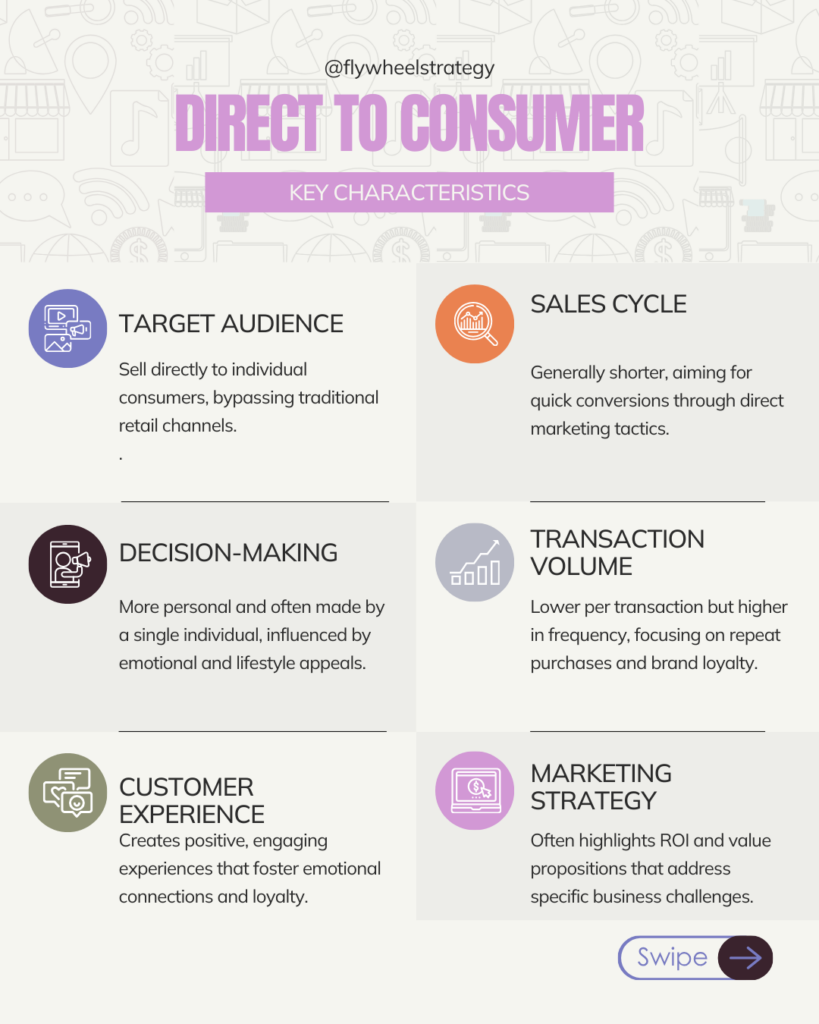
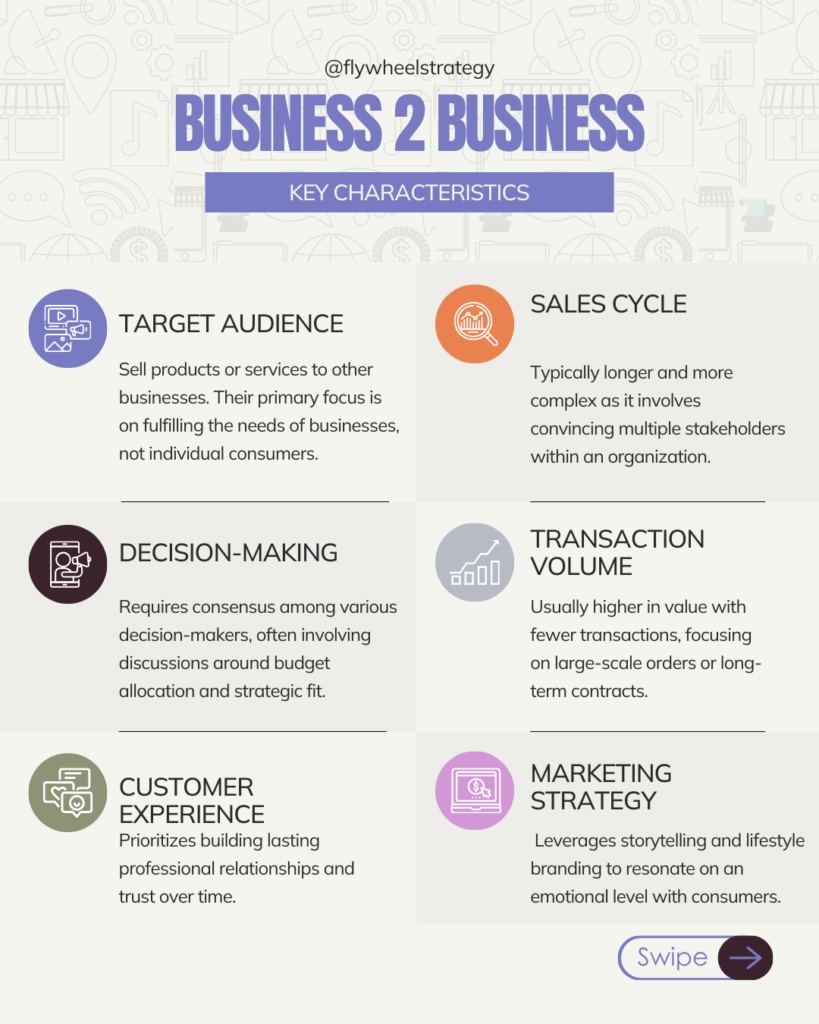
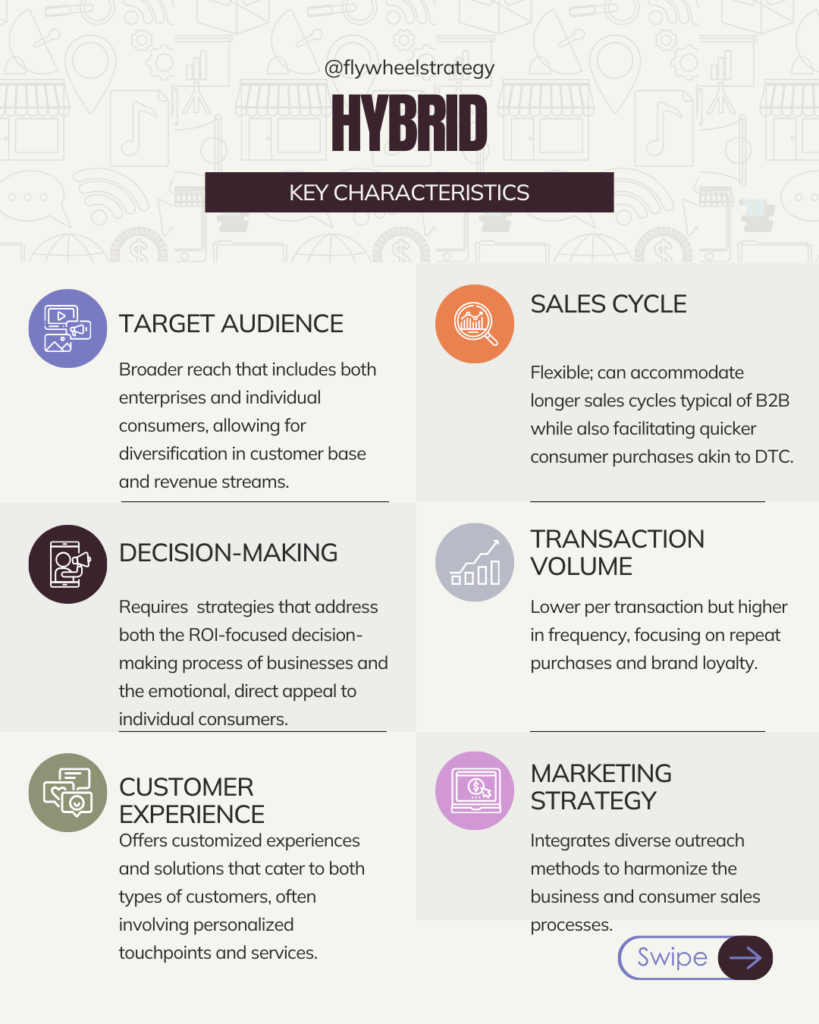
B2B (Business-to-Business)
- Target Audience: B2B companies sell products or services to other businesses. Their primary focus is on fulfilling the needs of businesses, not individual consumers.
- Sales Cycle: Typically longer and more complex as it involves convincing multiple stakeholders within a prospective client’s organization.
- Decision-Making: Requires consensus among various decision-makers, often involving discussions around budget allocation and strategic fit.
- Transaction Volume: Usually higher in value with fewer transactions, focusing on large-scale orders or long-term contracts.
- Customer Experience: Prioritizes building lasting professional relationships and trust over time.
- Marketing Strategy: Often highlights ROI and value propositions that address specific business challenges.
Example: Salesforce, a leading customer relationship management software provider, successfully markets its platform to other businesses by emphasizing its ability to enhance productivity and ROI through integrated CRM solutions.
DTC (Direct-to-Consumer)
- Target Audience: Sell directly to individual consumers, bypassing traditional retail channels.
- Sales Cycle: Generally shorter, aiming for quick conversions through direct marketing tactics.
- Decision-Making: More personal and often made by a single individual, influenced by emotional and lifestyle appeals.
- Transaction Volume: Lower per transaction but higher in frequency, focusing on repeat purchases and brand loyalty.
- Customer Experience: Creates positive, engaging experiences that foster emotional connections and loyalty.
- Marketing Strategy: Leverages storytelling and lifestyle branding to resonate on an emotional level with consumers.
Example: Warby Parker, an eyewear company, exemplifies DTC success by engaging directly with consumers through an online platform, offering affordable glasses with an at-home try-on option, thus creating a seamless and personalized customer experience.
Hybrid Approach
- Combination of B2B and DTC: Employs elements from both business models to leverage the advantages of each. Businesses utilizing a hybrid approach strategically sell both to other businesses and directly to consumers.
- Target Audience: Broader reach that includes both enterprises and individual consumers, allowing for diversification in customer base and revenue streams.
- Sales Cycle: Flexible; can accommodate longer sales cycles typical of B2B while also facilitating quicker consumer purchases akin to DTC.
- Decision-Making: Requires adaptable strategies that address both the rigorous, ROI-focused decision-making process of businesses and the emotional, direct appeal to individual consumers.
- Customer Experience: Offers customized experiences and solutions that cater to both types of customers, often involving personalized touchpoints and services.
- Marketing Strategy: Integrates diverse outreach methods including digital advertising, content marketing, and personalized communication to harmonize the business and consumer sales processes.
Example: Apple Inc. exemplifies a hybrid approach, selling iPhones and other electronics directly to consumers while also providing enterprise solutions to businesses, thus capitalizing on both market segments to drive growth and brand loyalty.
Why a Different Mindset, Expertise, and Strategy is Needed
- Understanding Audience:
- B2B requires a deep understanding of business needs and decision-making processes.
- DTC demands insights into consumer behavior, preferences, and emotional triggers.
- A hybrid approach involves developing dual personas: detailed business profiles for B2B and rich consumer profiles for DTC. The company can leverage data analytics to understand overlapping needs and preferences across both segments, thereby enhancing product offerings.
- Relationship Building:
- B2B focuses on cultivating long-term partnerships through trust and credibility.
- DTC thrives on creating immediate, meaningful connections with consumers.
- Combining B2B and DTC, the company can nurture partnerships with businesses while simultaneously engaging directly with end-users. Utilizing CRM systems to track interactions allows tailored communication that considers the nuances of both business and consumer relationships.
- Marketing and Sales Tactics:
- B2B strategies often involve detailed, informative content aimed at educating and persuading a select audience.
- DTC marketing leverages emotion-driven campaigns, visual storytelling, and experiential branding to appeal to individual consumers.
- In a hybrid model, the company can blend educational content and storytelling. For example, they might produce webinars and whitepapers that appeal to B2B audiences while developing visually compelling social media campaigns that resonate with DTC customers, ensuring consistent brand messaging across channels.
- Resource Allocation:
- B2B may require investment in relationship management and sales support.
- DTC often invests heavily in branding, social media engagement, and customer retention tactics.
- Adopting a hybrid strategy means allocating resources efficiently to support both segments, like investing in technology that enables seamless integration of relationship management and customer engagement platforms, thus maximizing ROI through shared insights and streamlined operations.
In conclusion, both B2B and DTC models offer unique opportunities and challenges. By understanding the distinct differences and applying targeted strategies, businesses can effectively leverage either model to achieve success. Whether you’re an entrepreneur exploring these avenues or a marketer navigating this landscape, recognizing the importance of a tailored approach is key.
Ready to refine your strategy? Reach out to our team at Flywheel Strategy for expert insights and personalized guidance in optimizing your business approach, whether B2B or DTC.
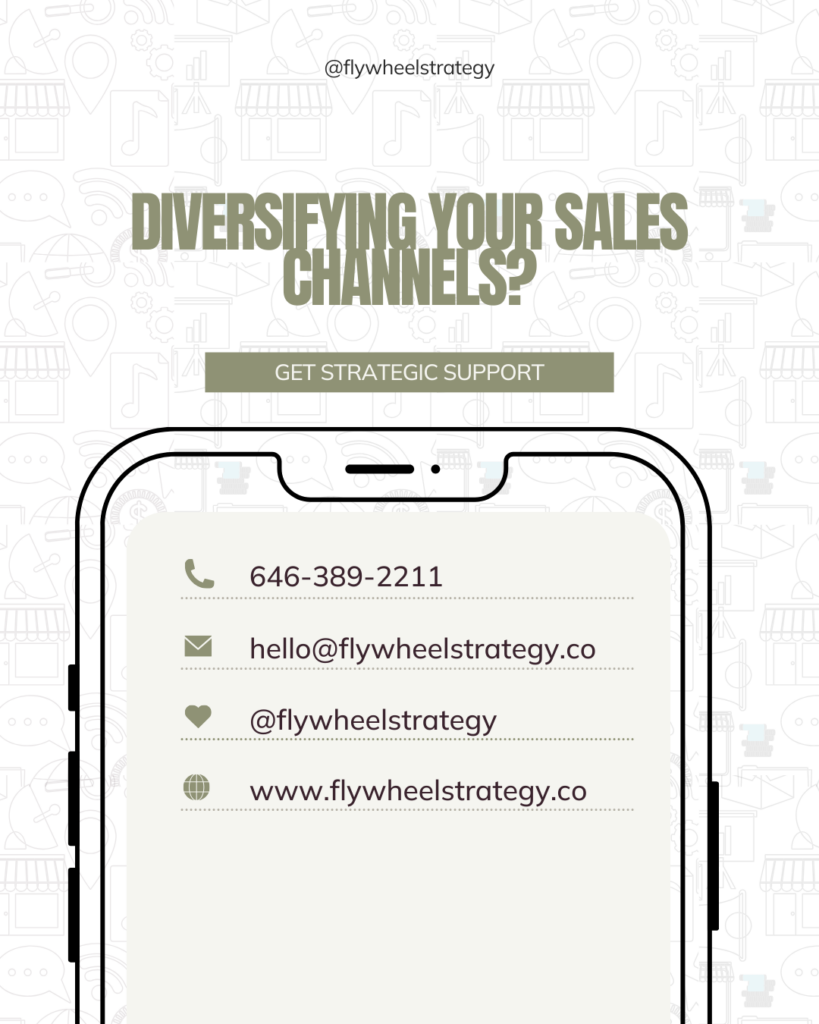
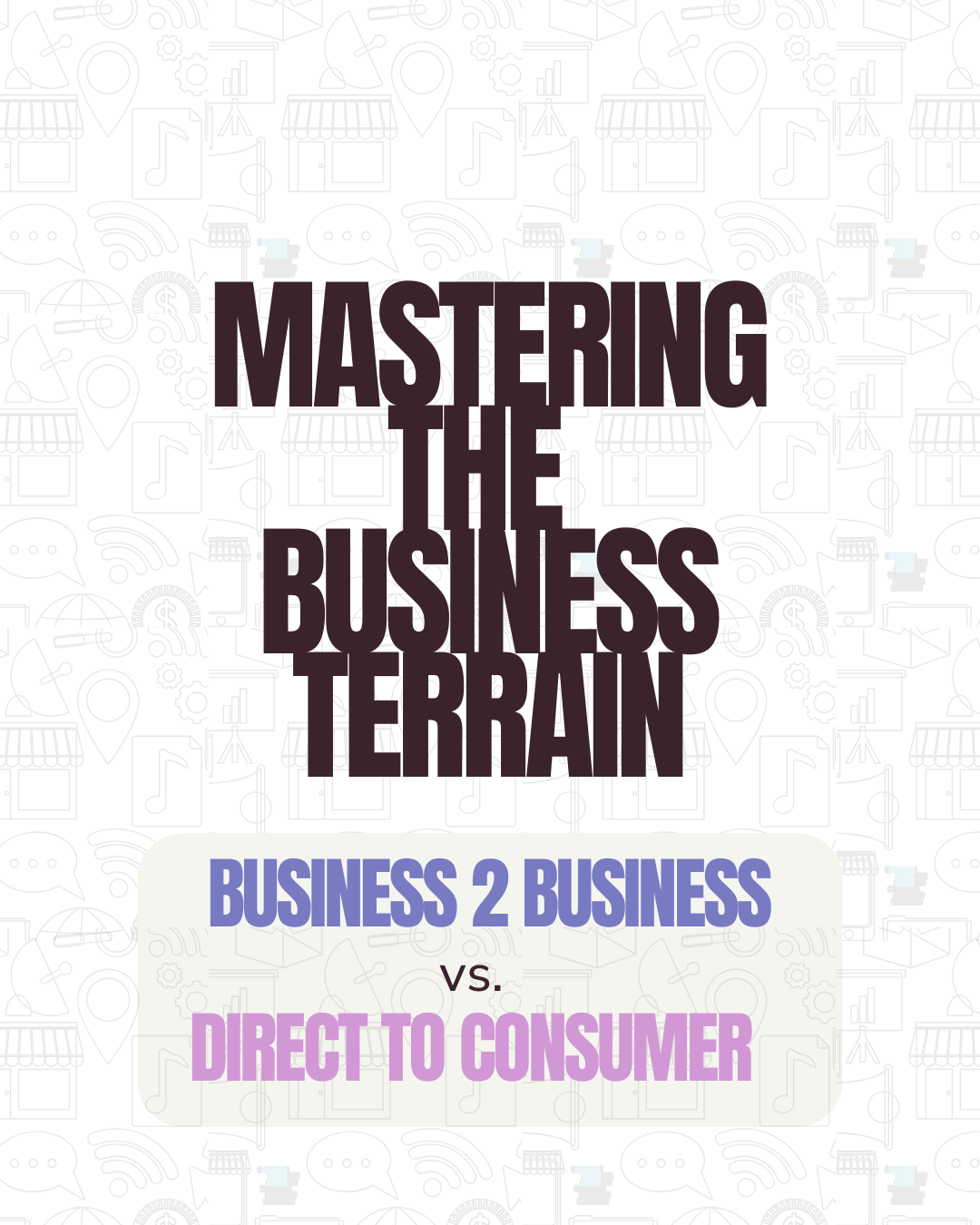
BE THE FIRST TO COMMENT: